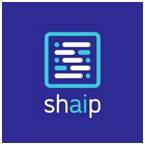Your cart is currently empty!
Understanding the Importance of High-Quality Data to Build a Muti-Lingual Chatbot
Multilingual chatbots are transforming the business world. Chatbots have come a long way since their early stages, where they’d provide simple one-word answers. A chatbot can now chat fluently in dozens of languages, allowing businesses to expand into a wider global marketplace.
Having a global reach allows businesses to tap into previously unexplored marketplaces. 60% of Apple’s $88 billion revenue in Q1 2018 came from outside of the United States. Over half of Google’s $31 billion came from non-U.S. marketplaces.
Related Post: How AI is Changing the Landscape of Customer Service
Chatbots are playing an increasingly important part in today’s business world. 80% of business owners predict implementing some form of chatbot by the end of 2020. This means there’s a great need for multilingual chatbots for companies looking to tap into the global marketplace and employ conversational AI chatbots, simultaneously.

A chatbot is only as good as its training data, though. Training data is the engine that drives the Machine Learning. If you’re interested in learning how to make a multilingual chatbot, we’re going to show you the importance of high-quality data in making that happen.
The Importance of Training Data for Multilingual Chatbots


Creating a conversational AI chatbot is notoriously difficult at the best of times. Creating an AI chatbot that can chat fluently in multiple languages is a Herculean feat. Multilingual AI chatbots also brings its own unique challenges.
Contextual
Context matters a great deal in language. Each language is essentially comprised of multiple different languages, depending on who you’re speaking to. Creating contextual conversational AI chatbots requires a high level of linguistic understanding.
Creating contextual multilingual AI chatbots gets even trickier still. What is considered formal and polite in one culture is different in another. Creating training data for an AI chatbot requires understanding the grammatical rules, as well as the customs, of different languages.
Trending Bot Articles:
4. How intelligent and automated conversational systems are driving B2C revenue and growth.
Scalability
Scalability is another common challenge in implementing AI chatbots. It’s one thing to essentially have a static back-end fuelling your AI. Creating an open-ended, evolving platform is a whole new level of challenge.
That’s one of the beautiful things about pre-made training datasets. You can incorporate new training data into your Machine Learning model as the need arises.
Accuracy
Having clean, well-documented data for your chatbot can also prove challenging. If your training data includes errors, your chatbot might not perform as anticipated. Some common issues with accurate training data include punctuation errors, incorrect word choices, or unintelligible sentences.
Diverse Data
Having enough data to create a Machine Learning corpus is one of the most common problems encountered learning how to make a multilingual chatbot. It can require hundreds of thousands of items to train a chatbot. It can require even more to create a conversational AI that’s fluent in many languages.
This is another benefit of working with a data provider. You’ll have access to training data from a wide variety of different scenarios, in a number of different languages.
Localization
Languages can vary wildly from region to region. To create a conversational AI chatbot that understands different regional dialects, you’ll need training data from each area you’re hoping to cover.
Also Read: How To Improve Game Loading Speed in Mac?
The Benefits of Having A Multilingual Chatbot
A fully functional, conversational AI can be a dream come true for a business owner. Imagine having a dedicated, loyal employee on the clock 24 hours a day, 7 days a week. Now imagine that employee could speak every language on Earth.
A multilingual chatbot is a major boon for customer and user experience, as well. Customers are given much more immediate attention, leaving them with a far more favourable opinion of your company.
Multilingual AI chatbots are beneficial for your business, as well. Chatbots are able to store every interaction, making them an invaluable source of sales and marketing data. They can also help save you time, money, energy, and resources on everything from payroll to eliminating redundancy and human error.
Closing Remark: Shaip Chatbot Training Data Services
As we have seen, not every company is set up to create their own chatbot training datasets. You might not have access to enough data, for instance. Preparing that data requires a high level of linguistic comprehension, as well as the technical capacity to implement it.
At Shaip, we have everything you need to power your conversational AI chatbot. We’ll help you gather the data you need, from any source imaginable, at any scale. Our data gathering services can extract data from conversation audio, clinical audio and transcripts, and even image and video.
Once you have the data, we also have the tools you’ll need to prepare it for processing via annotation and data labeling.
Even labeling and annotating data for a training dataset can be prohibitively complex. At Shaip, we can label your data for:
- Named Entity Recognition (NER)
- Semantic Annotation
- Sentiment Analysis Intent Variation
- Intent Classification
- Intent Recognition
Working with a training data service gives you all of the benefits of having a chatbot with none of the drawbacks. It frees you up to focus on building your product or business, while also ensuring that your multilingual chatbot will function flawlessly. It also opens up your business to the global marketplace, so your growth potential is virtually unlimited.
Also Read: Different Types Of CRM Software To Boost Customer Relations
Looking for AI Training Data?
Conversational AI seemed like a pipe dream even 10 years ago. We’ve been experiencing an unprecedented technological explosion in the 21st Century, and it’s only going to keep accelerating.
Now that you know how to make a multilingual chatbot, you’re going to need quality data. We offer an innovative AI platform that lets you gather and use data in all manner of innovative ways. Contact us today to find out how we can help you realize your vision!
About the author:


Headquartered in Louisville, Kentucky, Shaip is a fully managed data platform designed for companies looking to solve their most demanding AI challenges enabling smarter, faster and, better results. Shaip supports all aspects of AI training data from data collection, licensing, labeling, transcribing, and de-identifying by seamless scaling of our people, platform, & processes to develop AI/ML models. To learn more about how to make your data science team and leaders’ life easier, visit us at https://www.shaip.com.
Don’t forget to give us your 👏 !




Understanding the Importance of High-Quality Data to Build a Muti-Lingual Chatbot was originally published in Chatbots Life on Medium, where people are continuing the conversation by highlighting and responding to this story.